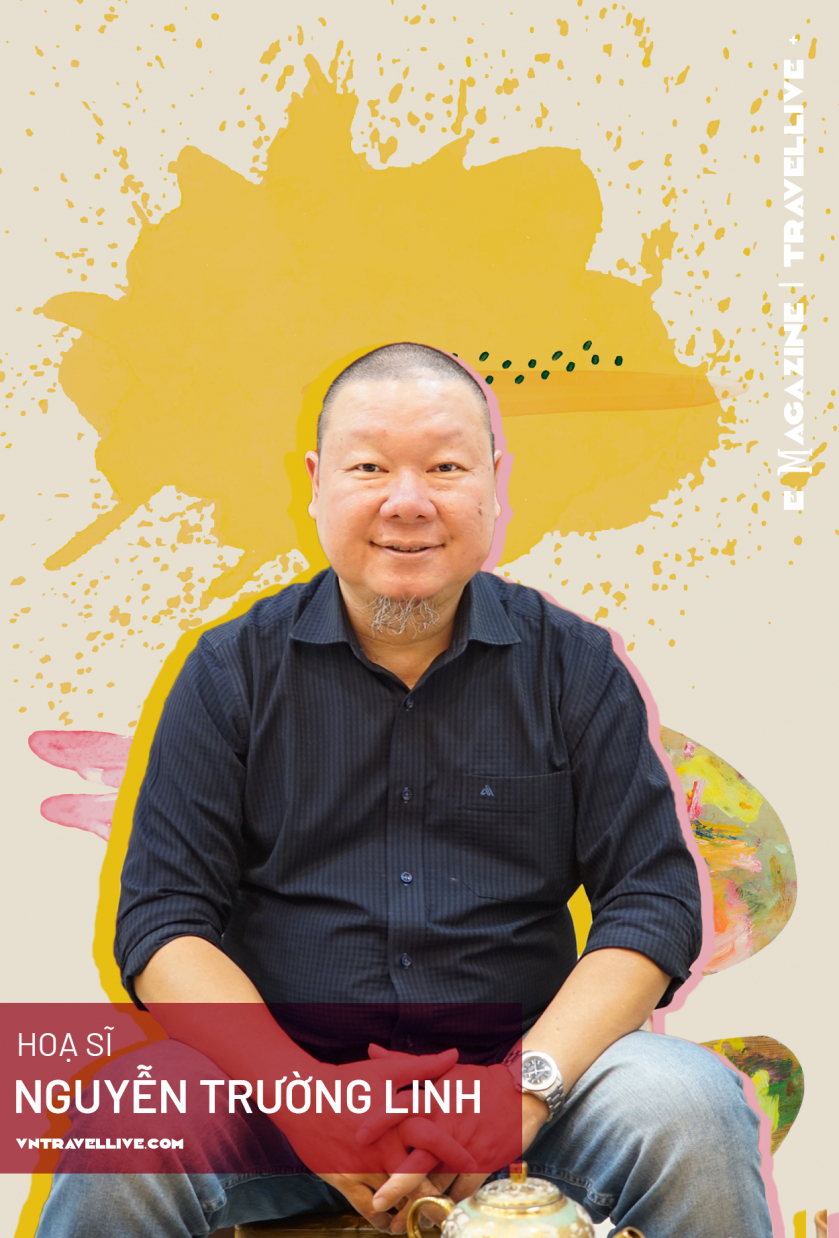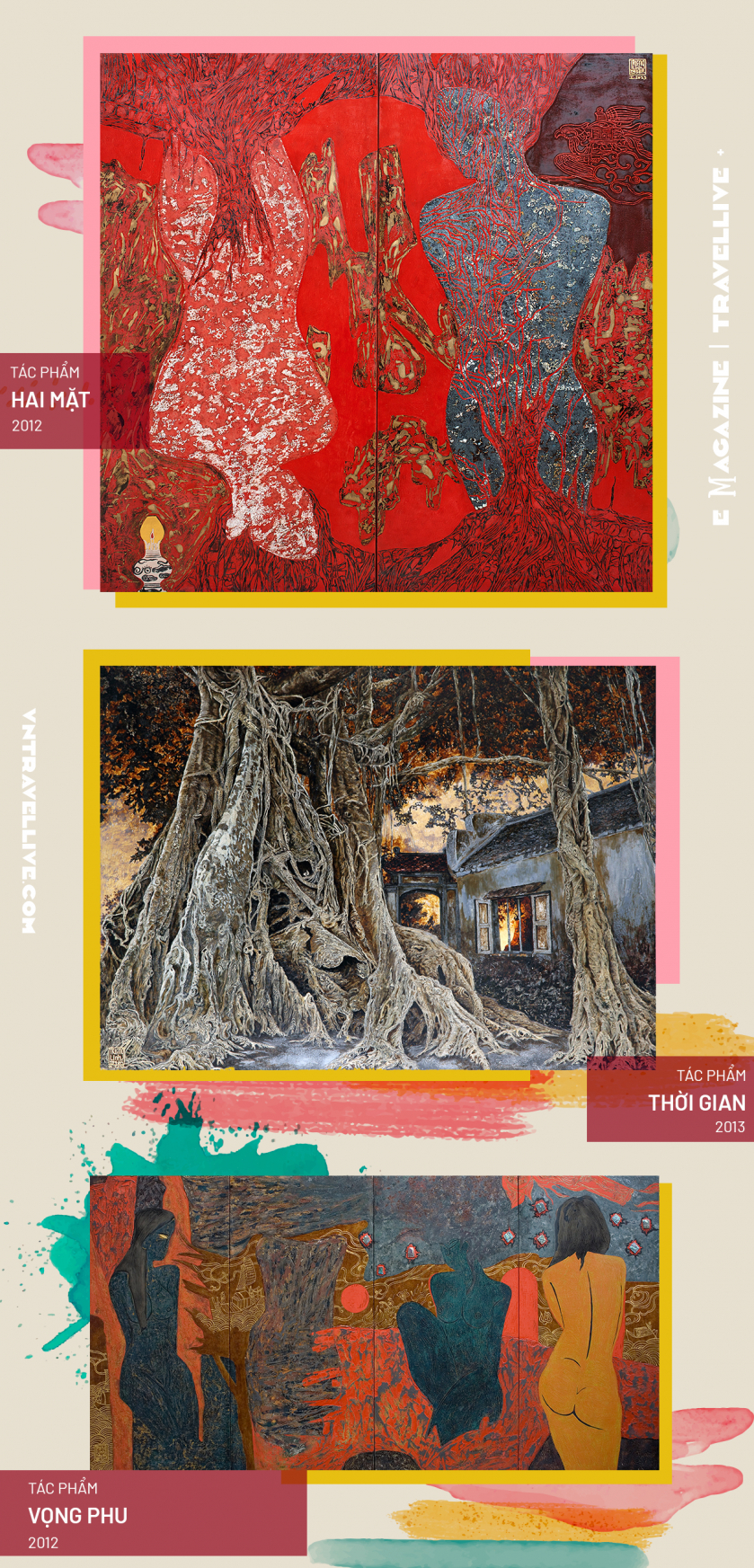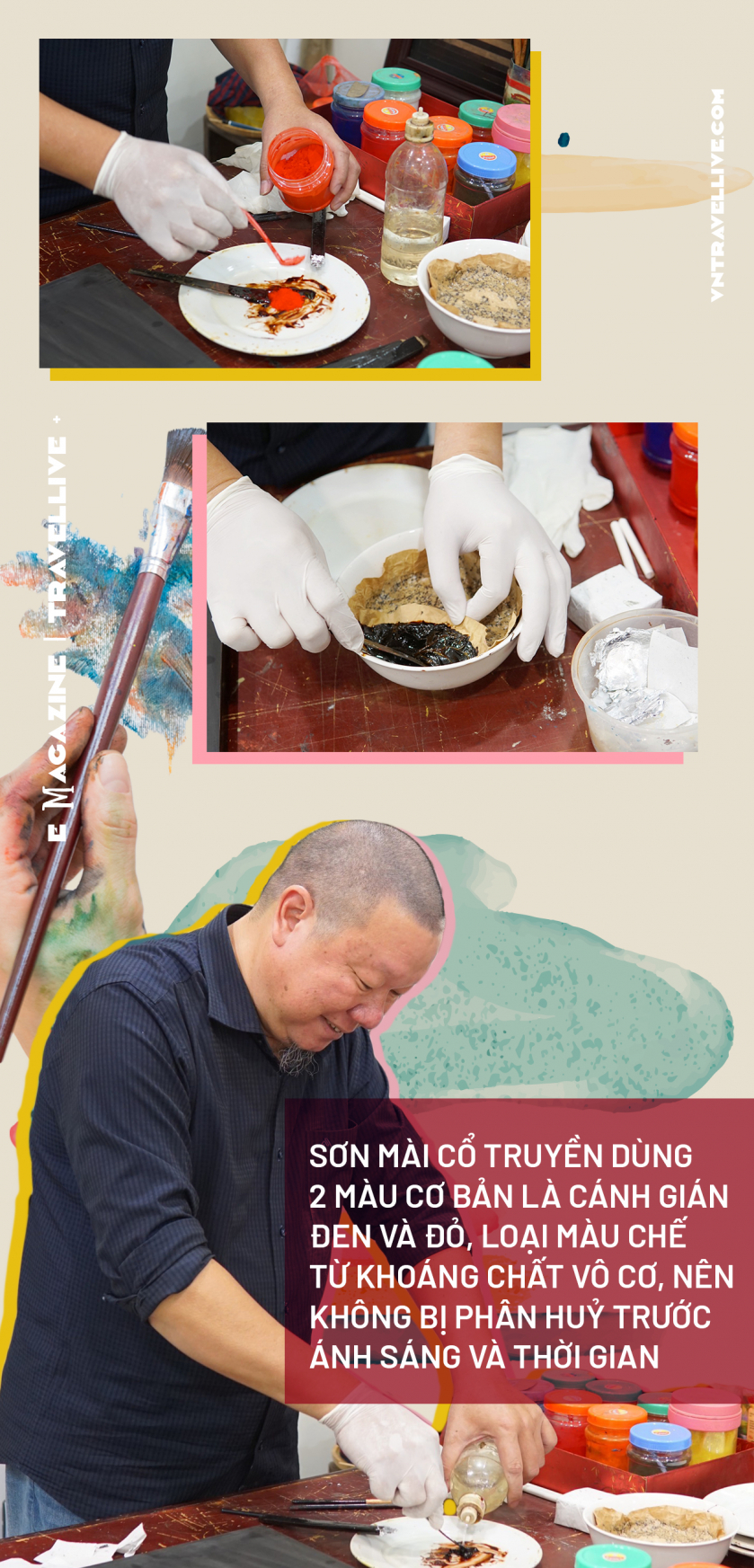When it comes to traditional lacquer paintings, few people do not know the artist Nguyen Truong Linh - leader of the Vietnam Lacquer Artists Group. His paintings have a nostalgic, folk-like appearance but are still full of creativity and modernity.
Painter Nguyen Truong Linh (1971, Hanoi) is one of the representative faces of traditional lacquer painting. Besides being the leader of the Vietnamese Lacquer Painters group, he is currently teaching at the Hanoi College of Culture and Arts, as Head of the Fine Arts Department.



Women, countryside scenes and pagodas in Hanoi are parallel themes that painter Truong Linh always aims for. For him, the image of women is a beautiful, aesthetic and endless theme for painters to exploit thoroughly, in all aspects. As for the theme of countryside scenes and pagodas in Hanoi, he thinks that those beauties will gradually disappear and instead will be restored and hybridized.
Living in the hustle and bustle of Hanoi, artist Nguyen Truong Linh's inspiration for creating countryside landscapes often comes from field trips. Art is sometimes not far away, but simply hidden in the things around us.
“I have been to many places, and each countryside is changing more and more with industrialization, the old things gradually change, sometimes making me feel sad. The ancient communal house architecture also nestles on the roadside covered in dust, the modern things overwhelm the tradition too much and are gradually disappearing. To preserve the soul of the countryside, I often start from small aspects but have their own meaning,” he shared.
Long Bien Bridge is the creative vein of artist Nguyen Truong Linh. Because he has been attached to this bridge since his childhood in Cau Go Street. The artist has tirelessly followed the life moving on the bridge and painted it for decades. So much so that when talking about him, everyone thinks of Long Bien Bridge, with the streets and the fate of people living under the bridge. The main colors in the painting are gray-brown, with a bit of rusty gold, under the arch of the bridge rising high into ancient roofs.
In 2022, the male artist also painted a series of 10 paintings of temples in the old quarter. There are places that if you go without paying attention, you will never see because they are hidden in extremely small alleys.
“In the past, my creative flow was Long Bien Bridge because I researched and drew this bridge a lot. In 2024, I plan to continue drawing about Long Bien Bridge, but it will definitely be different from the old emotional flow. In addition to Long Bien Bridge, in Hanoi I only draw a few more. Another direction of exploitation is the pagoda in the city, it is different from the village pagoda, the countryside pagoda. Because in the past, the city was a village town. Craft villages gathered here in the capital, each street did a profession and there were many pagodas close to the city. The pagoda in the countryside was vast, while the pagoda in the city had small, narrow alleys,” said painter Nguyen Truong Linh.

Besides, he always explores the fate behind the gentle beauty of women. The image of women is always present in the creative ideas of the male artist's paintings. We can mention works such as: "The unjust shadow", "The dream of Kieu" (I, II, III), "Waiting for her husband"... In addition, the strong and sexy image of a woman in "Tran gian", "De dat de nuoc", "Dem hoi Long Tri", "Thang Long"...
Or recognize the passionate breath of color through the works: "The girls", "Night butterflies", "Wandering songs", "Autumn for you", "Ancient pagoda in the old town", "Hanoi has Long Bien bridge", "Winter", "Two faces", "Waiting for husband", "Sunshine of the sacred temple", "Time", "Missing the countryside"...
Painter Nguyen Truong Linh takes viewers into a world of contrasts, collisions, and oppositions between tradition and contemporary, between reality and abstraction... but hidden within are the emotional ranges sent to the public.
Painter Truong Linh added: “In recent years, lacquer paintings have received renewed attention from many people, including artists. The public has also received them better, which is considered a motivation for artists to create.”


Before 2010, the art market was still in turmoil. At that time, the art community developed strongly in exporting fine art products, including lacquer. They used a material to paint instead of lacquer by coating the surface and then painting on it. Unlike traditional lacquer paintings, during the grinding process, the artist would paint, revealing each layer, deciding to stop or continue grinding.
Therefore, when brought abroad, the public looking for information often sees fine art paintings that are not traditional lacquer, leading to misunderstandings about the concept of Vietnamese lacquer paintings. Therefore, Mr. Nguyen Truong Linh established the Vietnamese Lacquer Artists Group in 2013. The group is diverse in age (from 35 to 72 years old) and adheres to traditional lacquer from using lacquer as raw material, making the frame, using vermilion, using gold, silver, following the correct procedures as creating a lacquer painting of previous generations of masters.
Painter Truong Linh said: “After 10 years of working with the Vietnam Lacquer Artists group, what makes me happiest is that wherever I go, people ask me if the group has anything new this year? Is there an exhibition?... It proves that people still remember my group no matter where they are, no matter what age they are, it still remains in the hearts of the public who love lacquer. Maintaining that respect is also very difficult. 10 years of operation have also encountered many storms, in 2019 the group even had to cancel the exhibition due to the impact of the pandemic.”
Lacquer is a traditional material used for lacquer painting, only found in Vietnam. Lacquer trees are mainly grown in Phu Tho, and during the process of collecting lacquer, the harvesters are very susceptible to smudging the paint. In addition, lacquer also depends on the weather, drying when there is high humidity. The main colors are usually red, cockroach wings, black...
During the 10 years of being the leader of the Vietnam Lacquer Artists group, painter Truong Linh also encountered many difficulties. The most special was having to convince other generations of painters to exchange and bring new techniques to their paintings. Because in the past, traditional lacquer had several prominent materials such as: vermilion, mineral colors, eggshells, snail shells, mother-of-pearl shells... now there are many more ways to grind it that are less laborious but still achieve the desired results.

The male artist confided: “Every exhibition that is opened also encounters many difficulties, encouraging the brothers in the group to find ways to paint differently from previous works, with different subjects… so that when the paintings are released, they will convey and resonate with the public.”
In 2023, the Vietnamese Son Ta Artists group plans to have an exhibition in Ho Chi Minh City in October, aiming at a modern perspective on old objects: wells, banyan trees, communal houses, etc.
Painter Nguyen Truong Linh said that in recent years, many people have returned to the trend of lacquer painting. Although it takes a lot of time and effort, lacquer is still a sustainable material, has a high traditional character, and expresses a contemporary voice. For example, a realistic painting with lacquer, when you grind the color out, the nature of the object you paint has an abstract element in each drawing area of the painting. When lacquer is painted layer by layer, the image will change in each area, that is the surreal element in a realistic painting area.
“A lacquer painting can take 2 months or up to 6 months from the idea sketch to completion, depending on the artist's condition and color,” he said.
In 2023, the Vietnam Son Ta Painters group will also have a new project supported by a businessman who loves paintings, hiring artists to paint at a farm in Phu Tho. Here, lacquer painters will gather to create works to give as gifts and display at the Hung Temple Festival.
In the near future, there will also be a small exhibition of lacquer paintings at the Hung Temple Festival in Phu Tho. The aim is to return to the source, because Phu Tho is the place that provides lacquer resin for artists. In addition, this project also donates paintings to cities... The future development direction is to open a Vietnam lacquer museum in Hanoi - this is also considered a long-term project.
Here is a short video of the artist painting lacquer:
















